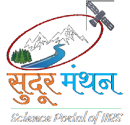The riverine alluvial grasslands of The Kaziranga National Park and Tiger Reserve (KNPTR) are home to at least 2,400 one-horned rhinos and support an assemblage of eight mega- and meso-herbivores. Annual floods and monsoon clouds are an essential part of Kaziranga’s delicate ecosystem. Kaziranga exists due to the monsoon, and so is the cloud. With their large body size, the rhino and elephant require almost 150 kg and 240 kg of fodder, respectively, every day. Therefore, rapid assessment and real-time monitoring of grassland biomass can complement effective planning and management of the park for successful conservation. The only solution for regular/continuous rapid assessment of grassland biomass is the use of all-weather Synthetic Aperture Radar (SAR) satellite observations (O¢Hara et al., 2019). EOS-04 Medium Resolution ScanSAR Mode (MRS) from January to August 2023 was used for the study. An increase in SAR backscatter was observed with increasing grassland biomass. In January, the grassland of KNPTR was in a completely senesced (brown) stage and not palatable for the wild herbivores and the observed backscatter (HH) was -10.28 ± 2.36 dB. To promote grassland growth, control burning is essential part of park management exercise. Generally, control burning is done between February 2nd week – March 1st week in KNPTR. Increase in backscatter (HH) was observed in March (-10.03 ± 2.49 dB) and April (-8.84 ± 1.95) as new growth of the grasses continues. However, decrease in backscatter (HH) was observed in May (-10.53 ± 1.75 dB) and June (-11.07 ± 2.68 dB) despite advancing grassland growth which can be attribute to increased moisture conditions in May and followed by a flood in June. Further increase in backscatter (HH) was observed in July (-8.93 ± 2.76 dB) and August (-8.39 ± 2.55 dB). However, the increase in backscatter (HH) was less than 0.6 dB as the grassland of Kaziranga attends full maturity in July and flowers in August. The backscatter value of EOS4 from January to August 2023 along with the stage of grassland growth is shown in figure 2. The HH polarisation (figure 1a) was more sensitivity to grassland growth compared to HV (figure 1b) polarisation. The saturation effect was visible in the HV backscatter once the grassland reached the near maturity stage (i.e. late June) to the flowering stage (i.e. August).

Figure: (a) KNPTR as observed EOS-04 S-band SAR; (b) KNPTR observed Sentinel 2A optical data-Standard FCC; (c) The change in HH and HV backscatter value along with events of grassland management and growth from January to August 2023 marked by coloured lines.



